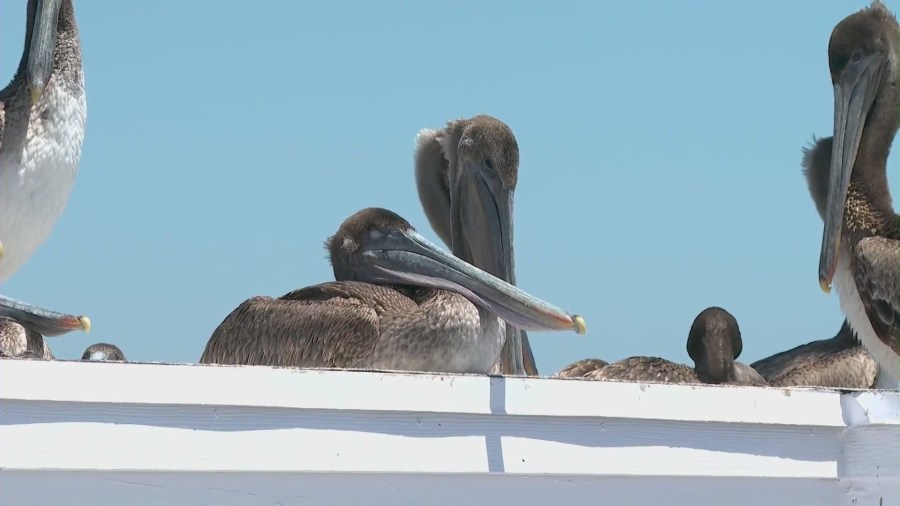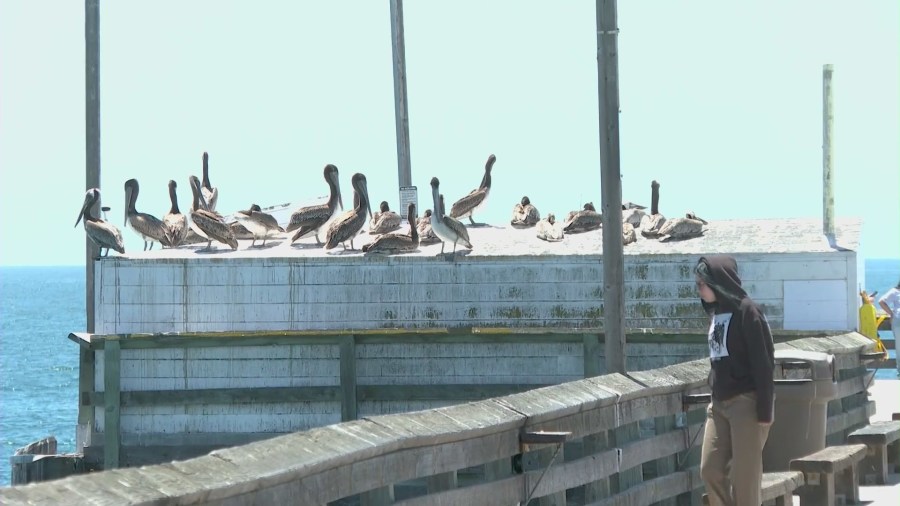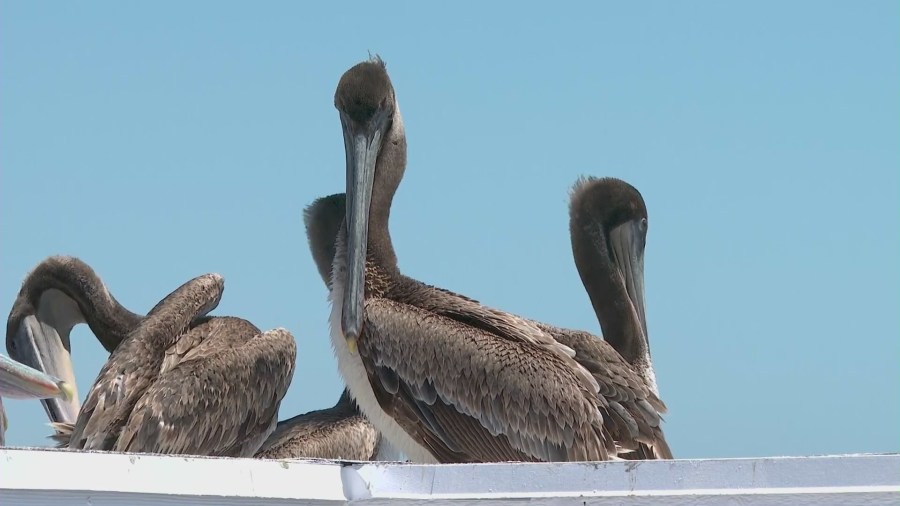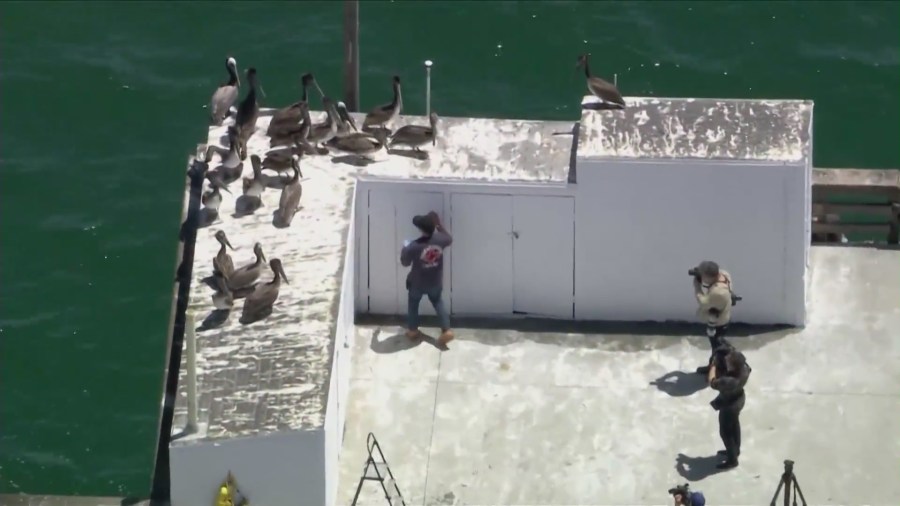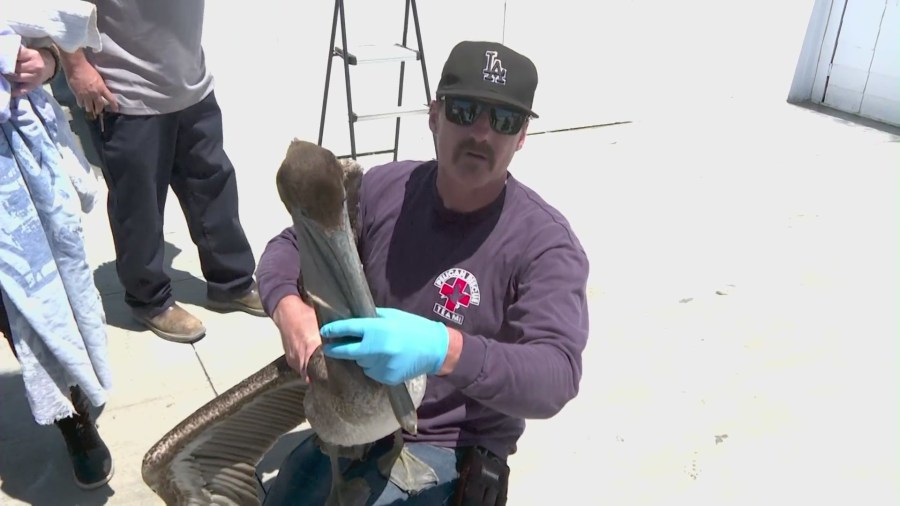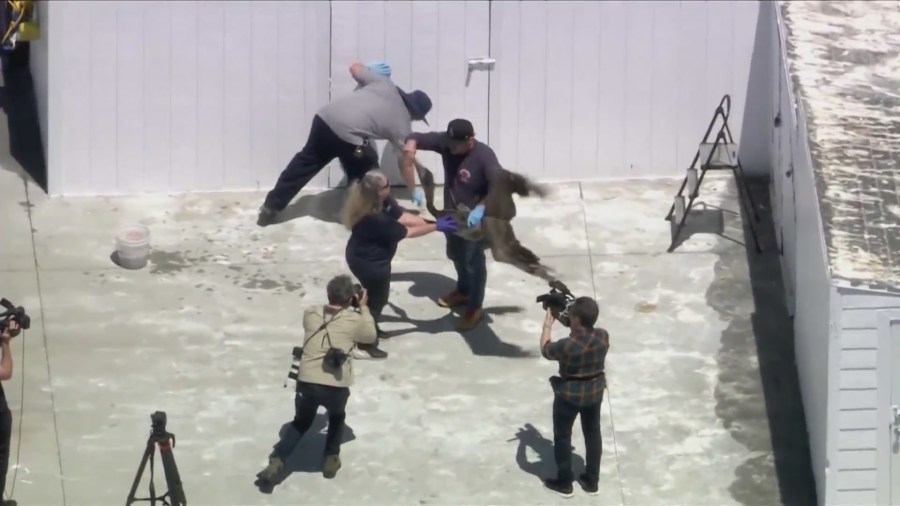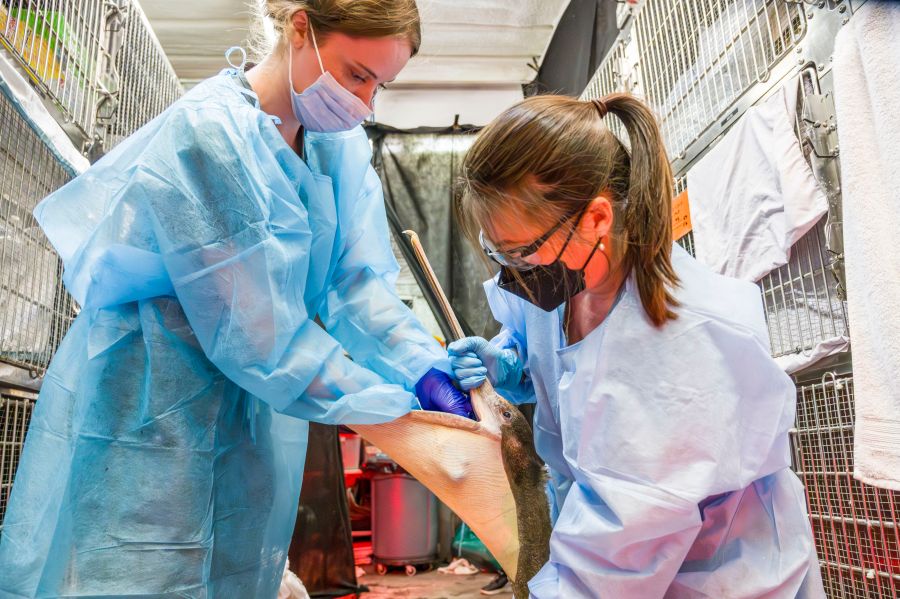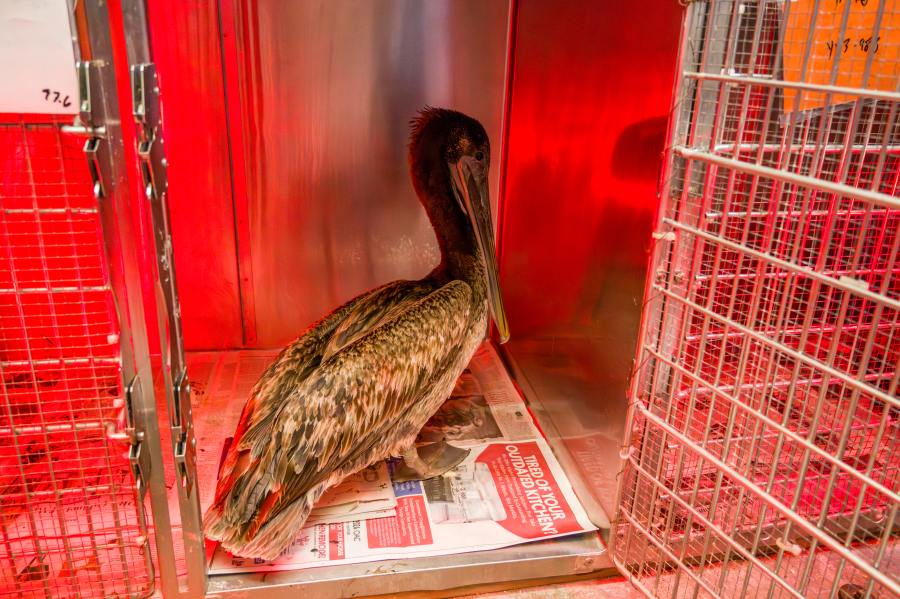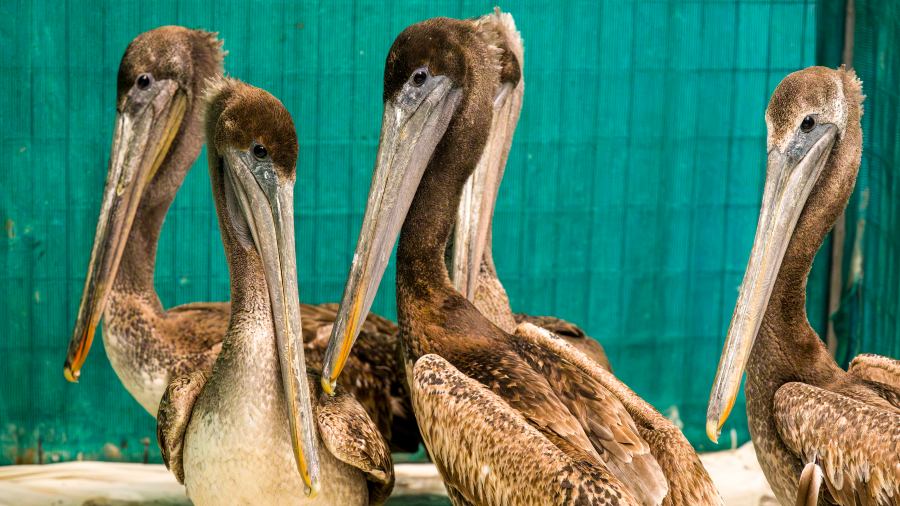Large groups of sick, dying pelicans are appearing in Southern California as wildlife officials remain concerned over the continuing mystery.
Since April 28, over 100 sickened pelicans have been discovered at Newport Beach in Orange County and only around half of them survived.
On Tuesday, May 5, dozens more showed up at the Newport Beach pier and were taken to the Wetlands and Wildlife Care Center in Huntington Beach.
Around 80 brown pelicans began showing up on April 2, with most of them flying in from Orange, Riverside, and San Bernardino Counties. Within the first two hours of arrival, 51 pelicans had died.
“They are coming in emaciated, and hypothermic,” rescue workers said. “Initial lab work is confirming they are in starvation mode. A large percentage are coming in with fishing gear entanglement.”
“They’re wet, they’re cold, they’re hungry and they’re severely anemic when they’re found,” said Dr. Elizabeth Wood with the Wetlands and Wildlife Care Center of Orange County.
The issue is being labeled a “mass-stranding event” and the cause of it remains unknown, officials said.
Workers are trying to save as many as they can by bringing in sick pelicans for immediate treatment along with supportive care by providing oral and IV fluids, vitamins and food.
Many of the treated pelicans have shown great improvement and are steadily gaining weight.
“Follow-up lab work shows that their anemia and low total proteins in their blood are improving,” staff said.
“The good news is if they make it through those first couple critical hours and we’re able to warm their body,” Wood said. “Beyond that, they respond really well to care. So the first couple of hours are critical hours.”
However, the rescue center is running out of space and struggling to keep up with the number of sick and dying pelicans that continue arriving.
It costs $45 per day to care for each pelican at the rescue center and staff are hoping public donations can offset some costs.
As workers continue doing their best, the mystery behind the pelicans’ mass illness remains unknown.
“We haven’t ruled out all types of infectious causes,” Wood said. “It does not appear to be highly pathogenic avian influenza at this time. But there are lots of other possibilities out there as far as infectious causes. But for the most part, they’re basically just starving and we just don’t exactly know why.”
A photo seen below of a sick brown pelican was provided by the wildlife center so the public can easily identify one if spotted. Other signs include lethargy and if a pelican does not quickly move away when approached by people.
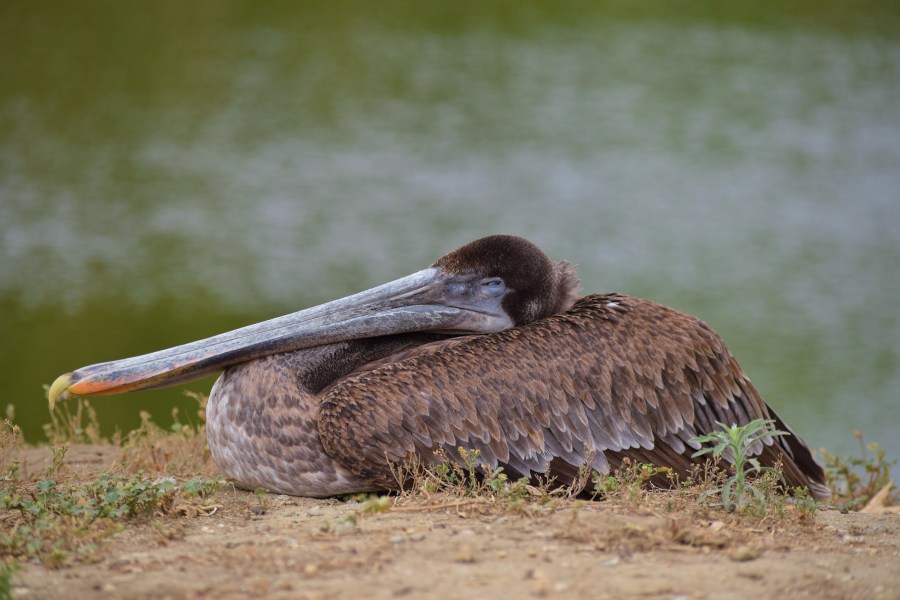
Rescue staff are asking the public for donations to help them treat the droves of birds that continue arriving.
More information, including a donation page for the Wetlands and Wildlife Care Center of Orange County, can be found here.

